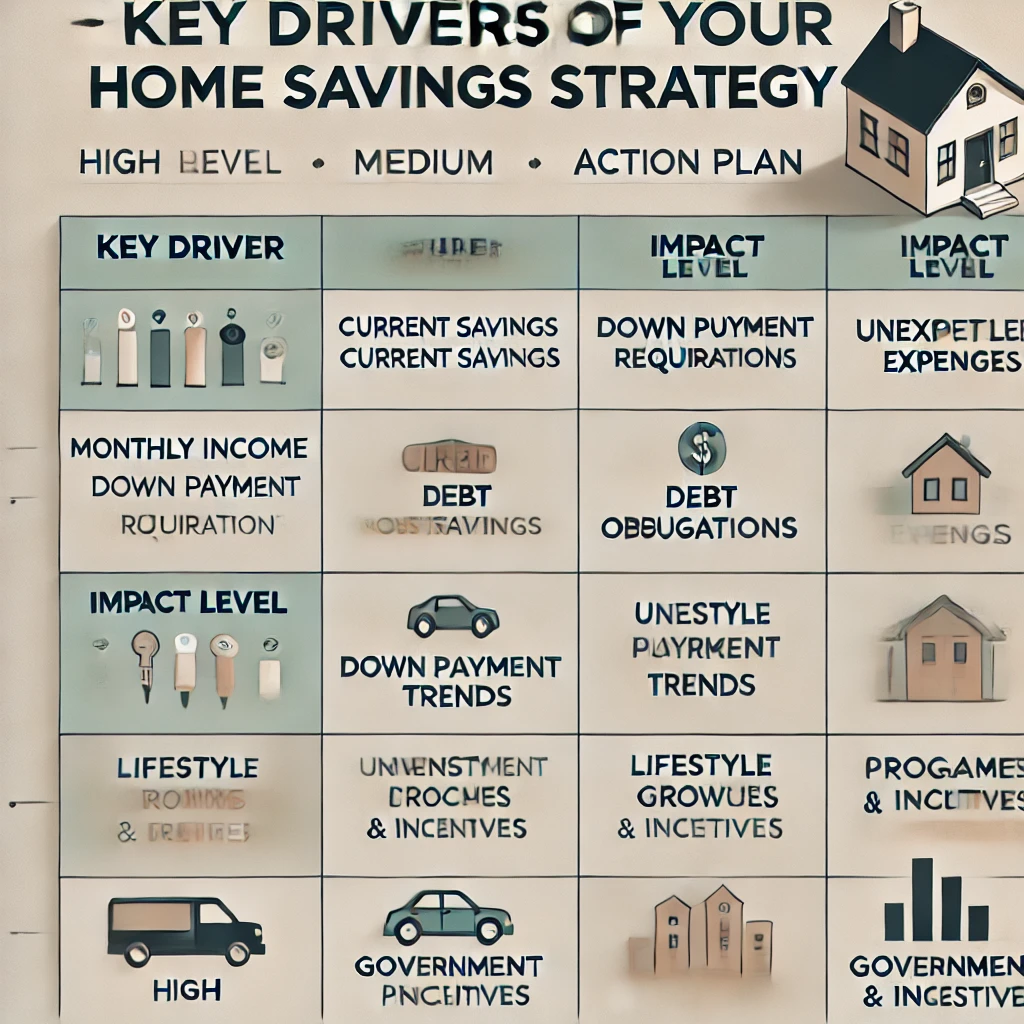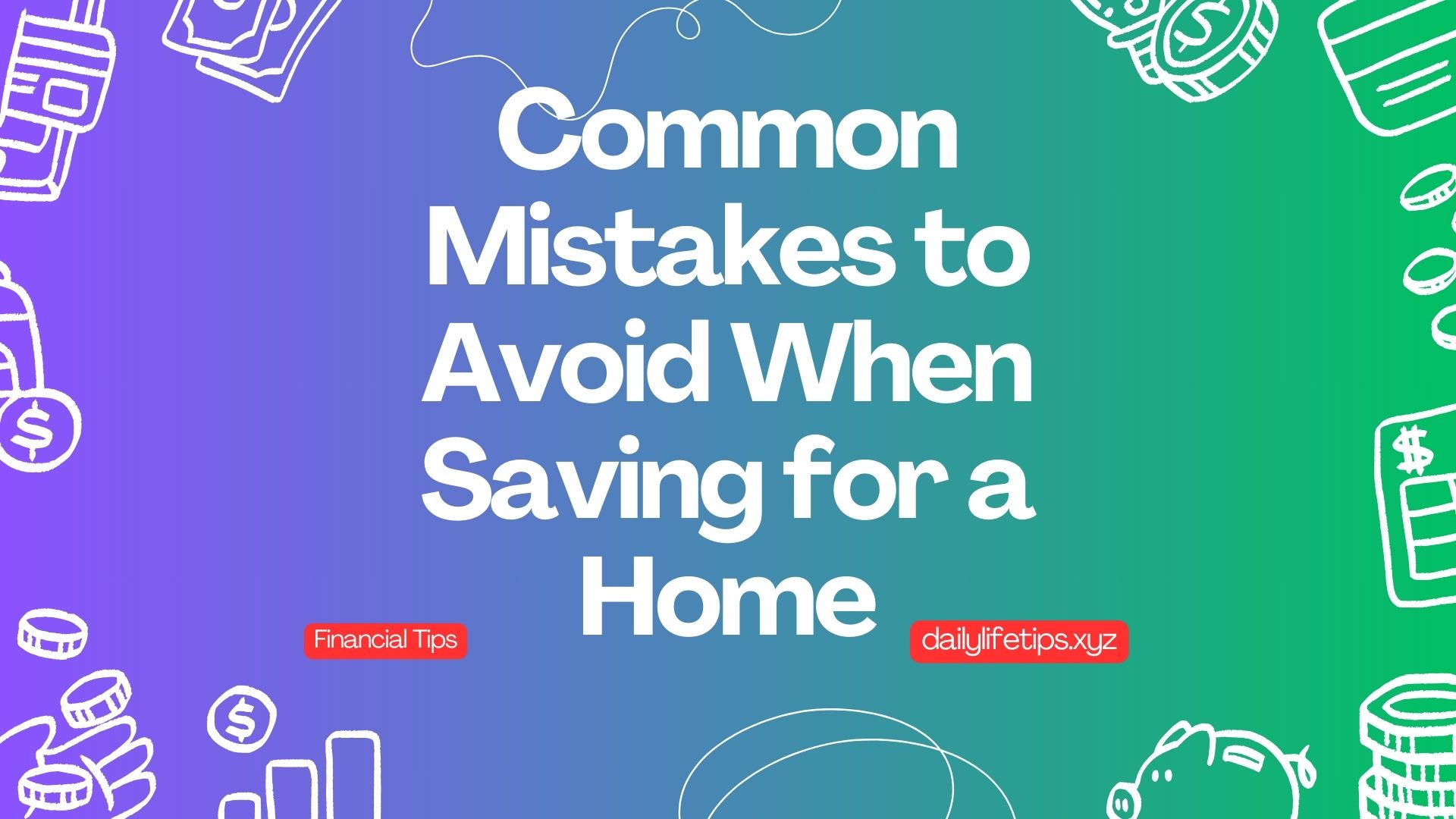A home is usually a primary financial goal, and saving for one will need targeted planning and discipline. Unfortunately, many buyers fall into common traps that impede their path and result in costly missed opportunities. By spotting and steering clear of these eighteen home savings pitfalls, you can simplify your savings strategy and set yourself up for successful homeownership. This guide can show you where to stay on the right path.
This too is crucial information for a buyer as the mistakes can affect their savings, credit score and financial fitness overall.
Failing to Set Feasible Budget-Busting Homebuying Expectations

The process of saving for a home starts with setting achievable goals. You must now make decisions on how to project these needs against your financial capability… Many of us tend to either overestimate or underestimate our wants. So, try not too go overboard and also don’t short change yourself!
Setting Big, Hairy, Audacious Goals
If your goal is not within your grasp or you set overly ambitious goals, simply setting the goal in a Monday morning or New Years resolution style can leave you frustrated and disappointed. You may end up feeling defeated if you go after a property you cannot afford on your current savings. The goal is to know your financial situation, so that you can be sure about what you are able to pay for based on how much of income and of savings and expenses.
Homeownership Costs Too Low
On the other hand, some buyers fail to consider all the costs that come with homeownership. You are not just paying the price of purchase; also you have to consider all other expenses like property taxes, maintenance costs, insurance, utilities. Not including these costs in your budget can get you into financial trouble once the move has been completed, it is important to create a checklist of all likely expenses=./
Top 5 Things You Should NOT do when Saving for a Home!
If a home is the motivation, these common mistakes can impact your financial standing when saving for it. These may be of a few of one of the most crucial blunders you could wish to stay clear of:

Failing to Save an Emergency Fund An emergency fund is essential for coping with situations where you suddenly owe money, which will happen more frequently when you own a home. If you do not have enough savings to cover these costs, then repairs can be a big headache for your budget. Strive to establish a rainy-day fund that covers three-to-six months of living costs to protect your financial well-being.
Debt Reduction A type Fencing this will factor into both your ability to save for a home and qualify for a mortgage. Take steps to pay off high-interest debts first so that your credit score improves along with it, which will enable you to save more money. It can also make your debt-to-income ratio look better, which is good to be presented before a lender.
Not paying attention to your credit score Your credit score is an important factor that lenders consider in approving a home loan and setting the interest rate. You can pay higher interest rates or even be rejected from applying for a mortgage if you do not worry about your credit score. Request to receive regular credit reports, correct any mistakes and pay on time, reduce your credit card accounts.
Also Read More:
- 7 Simple Tricks to Pay Off Debt Faster

Paying down debt is tough, it can feel like a constant tug of war between […]
- What to Know Before Buying Used Items? – 10 Pro Tips

Used items or second-hand are a wonderful way to buy things for less but it […]
- 20 Smart Tips for Building an Emergency Fund

A rainy day fund is the foundation of financial security, providing a cushion that bails […]
- How Long Does It Take to Save for a House?

Purchasing a house is one of the most common financial milestones and it involves setting […]
- How to Budget Your Money Like a Pro

Budgeting is the foundation of financial health, but many find it difficult to keep a […]
Chart: Key Drivers of Your Home Savings Strategy

Here’s a sample chart layout for Key Drivers of Your Home Savings Strategy. It highlights important factors that influence how people save for buying a home. The chart could be either a pie chart, bar graph, or table, but I’ll describe it as a table for clarity:
| Key Driver | Description | Impact Level | Action Plan |
|---|---|---|---|
| Monthly Income | Amount of disposable income after essential expenses. | High | Create a budget to determine available savings. |
| Current Savings | How much money is already saved for the home. | High | Set savings goals based on current funds. |
| Debt Obligations | Total existing debt (credit cards, loans, etc.). | High | Focus on reducing high-interest debt first. |
| Housing Market Trends | Current property prices and interest rates. | Medium | Research market conditions regularly. |
| Down Payment Requirement | Minimum percentage needed for the down payment. | High | Save specifically for down payment milestones. |
| Unexpected Expenses | Emergency costs that may affect savings. | Medium | Maintain an emergency fund alongside savings. |
| Lifestyle Choices | Spending on non-essential items like vacations or luxury goods. | Medium | Cut down on non-essentials to boost savings. |
| Investment Growth | Potential returns from existing investments or savings accounts. | Low to Medium | Diversify savings into high-yield accounts. |
| Government Programs & Incentives | Grants, tax breaks, or programs to assist first-time buyers. | Medium | Explore applicable government incentives. |
| Timeline for Home Purchase | The target time frame within which the home purchase is planned. | High | Set short- and long-term savings benchmarks. |
Assessing your down payment saving plan

An strategic approach to savings is critical in homeownership if it is to be successful. By reviewing and then adapting your strategy as you go, you can stay on course.
1. Review & Threatmap Your Budget Often
Your budget will need to be revisited and revised over time as your financial status changes. Monitor income, spend and savings progress to make sure you are on track with your goals. Additionally, feel free to customize it depending on your financial status or the projected period of acquiring property rights.
2. Use Tax Saving means such as Savings Account and Investment Options
Use high-yield savings accounts or investment options to build up your home account. Oftentimes, these accounts offer a considerable higher interest rate than a savings account, providing your money to grow efficiently. Review options and select an option with your risk tolerance and financial objectives
3. Consult with a Financial Advisor
Talking to a Financial Advisor so you can get the right info and a strategy that caters to your needs. They can help with budgeting, investment strategies and long-term financial planning to make sure you are ready for homeownership.
How to Save Money: Long-Run Success
Otherwise, you can lay down both short-term actions and long-term strategies to achieve your ultimate home-owning objective. Following these steps will get you started building great foundations for this house.
1. Automate Your Savings
This will help with keeping things consistent and keep you from spending. 8) Automate your savings Establish a recurring monthly transfer from your checking account into your home savings account By doing this you make a habit of saving for 10% to your business, and only then comes the rest, which helps prevent dispersion of values that could be used with other things.
2. Set Incremental Milestones
Reducing your savings goal into smaller, manageable milestones can also make saving money less daunting. Make more realistic goals such as saving “x” amount of dollars a month or save to an end goal by this date. Celebrate each achievement to keep you motivated and feeling purposeful.
3. Continuously Educate Yourself
Keep up with the housing market, mortgage rates and credit union money-saving tips. The common pitfalls are avoidable, however, having knowledge about it is crucial in order to make an educated decision. Along with the above tips, read articles, attend workshops or consult with experts to better prepare in advance for home buying.
Conclusion
Purchasing a home is one of the biggest investments you will make, and by avoiding these common pitfalls on your path to becoming a homeowner. These strategies, along with setting appropriate goals for yourself can make buying a home more realistic. Just make sure that you continue to educate yourself, stay away from the monkey business when it comes to saving and seek professional advice if needed!













